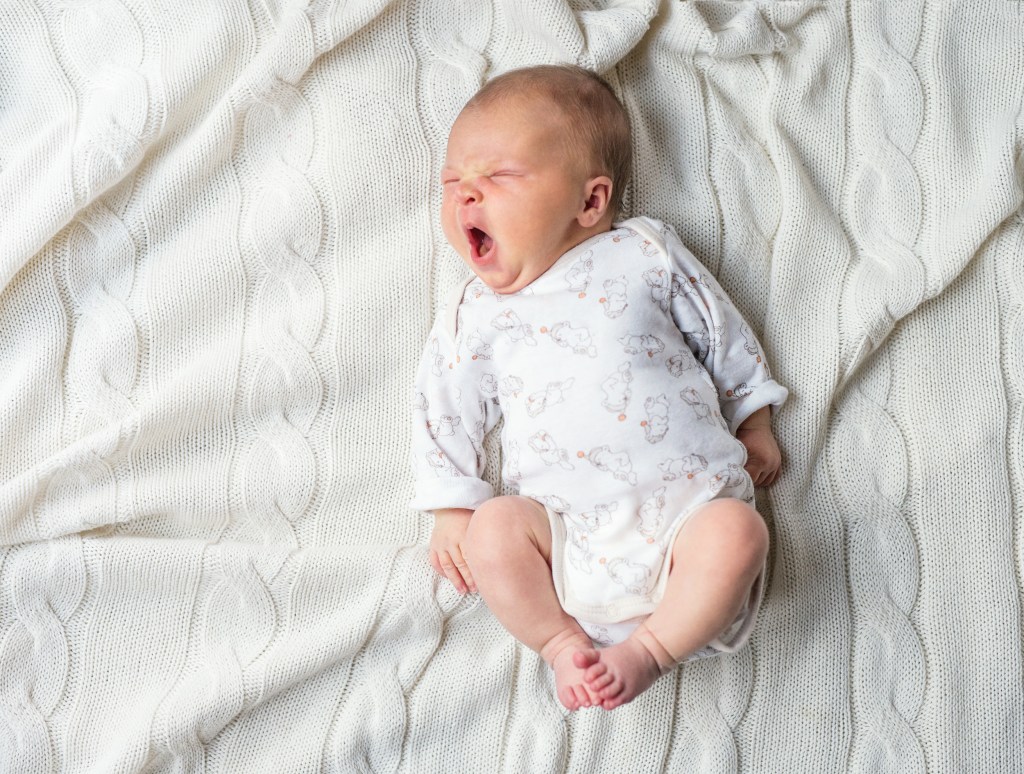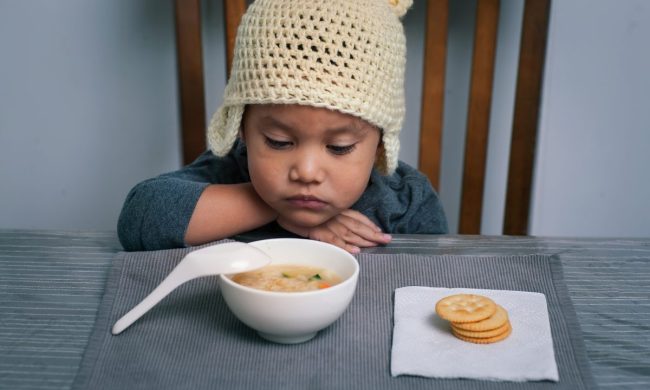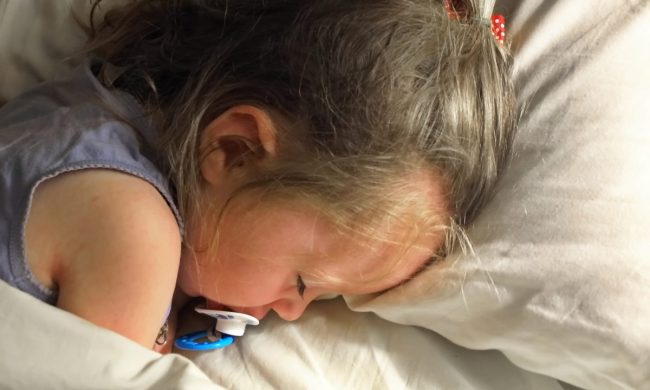The baby sleep-deprivation struggle is very, very real. More often than not, the culprit is an overtired infant. One minute your little one is playful and engaged, and the next the tears start flowing and the meltdowns begin. Once they are overtired, infants and children don’t fall asleep as easily and are more likely to wake up multiple times throughout the night. This creates an ongoing cycle of overtiredness and waking periodically. It’s crucial to find healthy bedtime solutions for your child to help them achieve longer, uninterrupted periods of sleep, because it is essential to your baby’s development.
It can be challenging to tell when a baby has crossed over into the overtired stage due to what many call a “second wind.” This is actually their nervous system going into overdrive and producing a burst of energy-inducing stress hormones. It can be even more challenging to gauge whether a baby or child is ready for sleep once they have moved past their optimal sleep window.

How to tell if a baby is overtired
Here are some of the most commonly seen signs that can tell you if you're dealing with an overtired infant:
Difficult to put down to sleep: May relax in your arms while you’re in motion (cue bouncing forever) but wakes immediately upon being put down on a sleep surface.
Naps that are short for the baby’s age: Short catnaps are developmentally normal for younger infants, but around 6 months naps naturally begin to lengthen.
Frequent waking at night: One or two wakings are developmentally appropriate for infants. Sleeping through the night at 1 to 3 months is considered getting around five to six-hour stretches, but many babies wake more frequently. After 6 months, sleeping through the night is six to eight hours. If your baby is waking multiple times within these timeframes, you likely have an overtired infant on your hands.
Falling asleep randomly: While newborns tend to fall asleep everywhere, there should be a rhythm that begins to evolve near the 3-month mark. Overtiredness may be an issue if your baby is falling asleep unexpectedly.
Fussy, easily frustrated, and difficult to satisfy: All babies are fussy sometimes, so it can be challenging to determine the cause. Lack of sleep is likely the problem if your baby has been fed and changed, and you’ve ruled out teething or sickness.

How to tell if your baby is sleeping enough
Staying on top of your baby’s developmentally appropriate sleep requirements will help you get back on track. Here are some general guidelines to help you determine if your baby is sleeping enough:
Birth-3 months: During this time, your baby won’t have a regular sleep pattern. Newborns need to sleep 16-20 hours per 24-hour period, but they wake every two to four hours to feed. From birth to 6 weeks, your baby will have 45 to 60-minute wake periods. This will lengthen to around one hour at 2 months and about an hour and a half by 3 months.
3 to 6 months: Baby sleep begins to become more predictable during this period, but baby will still need 10-18 hours of sleep per 24-hour period. While naps won’t be on a strict time schedule, you’ll see about three naps per day. Wake times will lengthen over the course of these months ranging from one and a half to three hours.
6 months to 1 year: Babies sleep around 14 hours in a 24-hour period. Wake times will gradually lengthen from two to four hours.

How to prevent the overtired cycle
The best way to avoid this is to implement a consistent routine based on your individual baby’s sleep habits. Most importantly, recognize that wake windows are estimates. Each baby will vary, so it’s important to keep an eye out for signs of tiredness.
Step 1: Monitor your baby for sleep cues. These are nonverbal signs that your baby is getting ready for sleep, including rubbing their eyes, yawning, pulling on their ears or hair, and not making eye contact.
Step 2: Bedtime should follow steps in the same order to tell your baby what’s coming next. This doesn’t have to be an elaborate bedtime routine. Most parents follow something like baths, jammies, books, and songs. Nap time can follow a shorter version of this bedtime routine, such as diaper change, books, and song.
Step 3: Set the stage for sleep. For 30 minutes to an hour before bedtime, you’ll want to take down the energy level. Reduce stimulation with lower lights and voices, no electronics, and transition from active playtime to more peaceful activity.

Tips on how to get an overtired baby to sleep
It may seem like your baby will never sleep through the night, but there are ways you can help create an optimal sleep environment and help your little one get a good night's sleep.
Step 1: Stay on routine, but be prepared to do it twice. You may need to move through the routine a bit more quickly, but it’s important to still give those nonverbal cues that sleep is coming. You may need to do the routine, try for sleep, then try again in 20-30 minutes if they aren’t able to fall asleep.
Step 2: Create an optimal sleep environment. A dark room with a sound machine is ideal for all baby’s rooms, but it’s even more important for an overtired baby on high alert.
Step 3: Be flexible. Getting an overtired baby to sleep is a win even if it doesn’t look exactly like you planned. Rocking and shushing in a dark room and then holding your baby for a nap is completely reasonable. While naps in the crib are ideal, you may need to get creative and go for a drive, a stroller walk, or wear your baby to get them to sleep.
Ultimately, it is possible to break the overtired cycle by watching your baby closely and adapting your schedule to fit their biological sleep needs. Keeping a log for a few days can help you find a pattern, so you can avoid having an overtired infant (and parents)!



